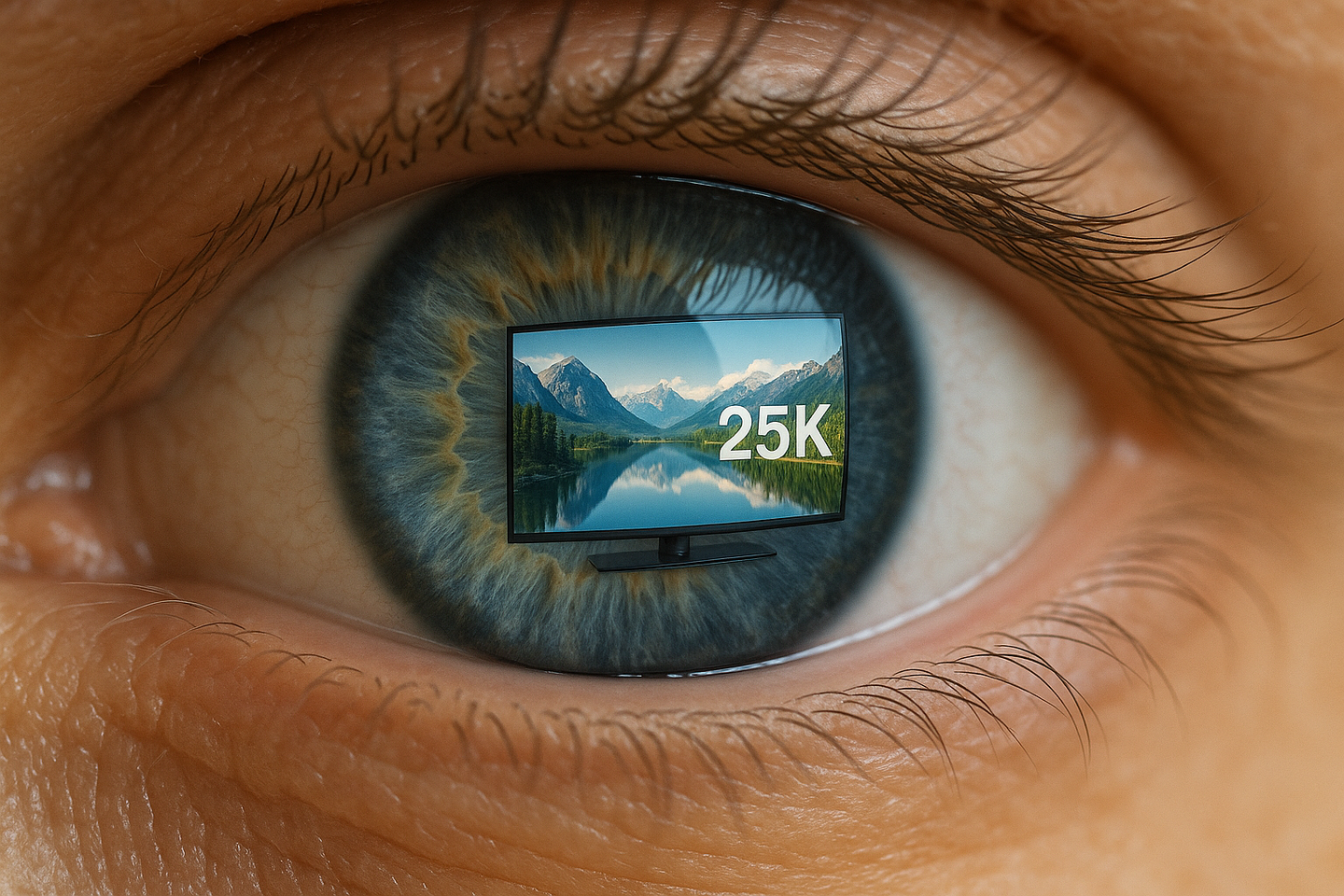Scientists develop retina E-paper display with 25k pixels per inch, matching human vision
Scientists develop retina E-paper with 25,000 pixels per inch, matching human vision for ultra-efficient future screens.

Retina E-paper can reproduce lifelike color images using pixels smaller than a single human photoreceptor. (CREDIT: AI-generated / The Brighter Side of News)
Scientists in Sweden have created a revolutionary new form of "electronic paper" that could change the way we interact with screens — from smartphones and laptops to next-generation virtual and augmented reality headsets.
In a paper, published in the journal Nature, scientists have created retina electronic paper, or retina E-paper, capable of showing realistic color pictures with pixels smaller than a single human photoreceptor.
Shrinking Pixels to Match Human Vision
When you hold a phone against your face or wear a VR headset, the screen resolution determines how real the image feels. The more tightly engineers squeeze pixels together to sharpen them, the faster they reach hard limits — colors merge, brightness diminishes, and it becomes costly to build. Emissive screens, which are the type used in most displays today, suffer from a difficulty when pixel dimensions drop to a micrometer or so.
Reflective screens, on the other hand, bounce ambient light back off instead of radiating it. They provide better brightness and reduced power usage, but previously, they've lacked the clarity of high-end OLEDs. The Swedish scientists desired to reverse this situation and develop a screen so subtle it would rival the precise nature of the human eye.
Their objective was lofty: to produce over 23,000 pixels an inch, roughly what the retina can perceive viewing an image through a pore the size of an eyeball. What they achieved was staggering, with more than 25,000 pixels an inch — the most accurate display ever produced.
The Science Behind the Smallest Pixels
At their core are metapixels — nanoscale pixels composed of small tungsten trioxide (WO₃) disks placed on reflective metal surfaces. The disks are a few hundred nanometers in diameter, smaller than viruses in most instances. By tweaking the size and spacing of the disks, the researchers were able to cause each disk to reflect specific colors — red, green, and blue — which, when combined together, can produce the whole range of colors.
WO₃ is special since it's electrochromic: it changes its optical property when small ions, such as lithium, move in and out of its form. This switching between metallic and insulating modes alters the light-reflection property of the material. In effect, a very small electrical pulse can "turn on" or "turn off" a pixel, altering its color or brightness without the need for power.
That is incredible efficiency. The retina E-paper consumes nearly 1.7 milliwatts per square centimeter when playing video and drops down to roughly 0.5 milliwatts for still images. Even after the power is switched off, colors remain in place for tens of minutes — a "color memory" effect that keeps power consumption low.
Performance That Rivals Reality
While tiny, these metapixels are video-speed, shifting states as rapidly as 40 milliseconds — fast enough for smooth motion. Reflectance of bright state is roughly 80 percent, with a light-to-dark contrast ratio of roughly 50 percent. Color is deep and saturated even when pixels are minimized, ending the age-old problem in display design.
To demonstrate the capabilities of the technology, the team copied Gustav Klimt's "The Kiss" onto a 1.4 by 1.9 millimeter area — about one four-thousandth the area of a smartphone screen — but with the same resolution.
They also printed a full-color picture of a butterfly and even a 3D illusion with distinct color channels for each eye, showing the system's ability to handle complex, dynamic images.
This means that each pixel is roughly equal to one photoreceptor in the eye," says Andreas Dahlin, professor at Chalmers University of Technology. "Humans cannot see anything beyond this resolution."
Kunli Xiong, the paper's lead author and assistant professor at Uppsala University, further added that the technology opens up new ways to engage with information and the world. "It could broaden creative horizons, facilitate remote collaboration, and even accelerate scientific inquiry," he said.
Toward the Next Generation of VR and AR
Because retina E-paper is reflective rather than emissive, it is able to display realistic images with reduced power consumption and eye fatigue. That makes it an ideal candidate for virtual and augmented reality systems, where light-weight and power-frugal displays are critical.
Researchers imagine small devices in which the screen is no bigger than an eye's pupil but gives a broad field of view with human-level acuity. The low energy requirement also suggests self-sustaining applications that might be combined with solar cells, eliminating the need for constant charging.
But there are obstacles on the road ahead to commercial deployment. The gamut of color available with the current system is not as broad as with OLED displays, and the materials must survive millions of switching cycles. Large-scale implementations will require advanced thin-film transistor arrays to address each pixel independently — a significant engineering challenge.
However, the researchers believe that this technology is a breakthrough. "This is a significant development in the production of screens that can be made smaller while improving quality and reducing energy consumption," professor at the University of Gothenburg Giovanni Volpe says.
Practical Implications of the Research
The arrival of retina E-paper could redefine display technology across sectors. To users, it will mean VR headsets and smart glasses that feel more natural and less power-hungry. To scientists and designers, it is an entirely new canvas on which to show information at resolutions previously not attainable.
In education and communications, it can make digital areas more realistic, allowing professionals and students to collaborate remotely as though they were in the same location.
By operating through ambient light and drawing small amounts of power, it can lead to greener, more durable devices — a step towards sustainable digital screens.
Research findings are available online in the journal Nature.
Related Stories
- New AI model revolutionizes medical imaging with 90% less computing power
- New AI text-to-video system masters the art of time-lapse video generation
- New discovery substantially increases the brightness of OLED displays
Like these kind of feel good stories? Get The Brighter Side of News' newsletter.
Shy Cohen
Science & Technology Writer



